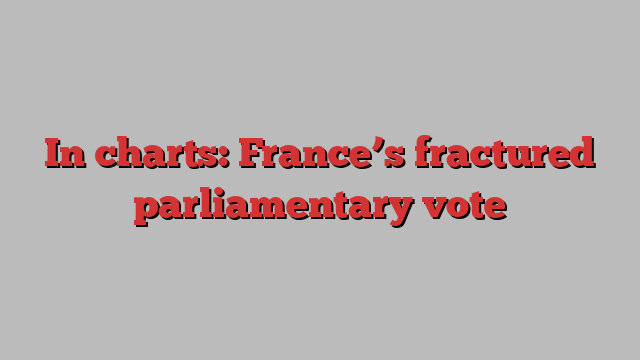
Unlock the Editor’s Digest for free
Roula Khalaf, Editor of the FT, selects her favourite stories in this weekly newsletter.
The leftwing surge in French snap elections stunned politicians and the public when the Nouveau Front Populaire alliance clinched first place in Sunday’s second-round vote.
Pollsters had projected that Marine Le Pen’s far-right Rassemblement National would win the most seats in parliament — only to see it come in third behind President Emmanuel Macron’s centrist alliance.
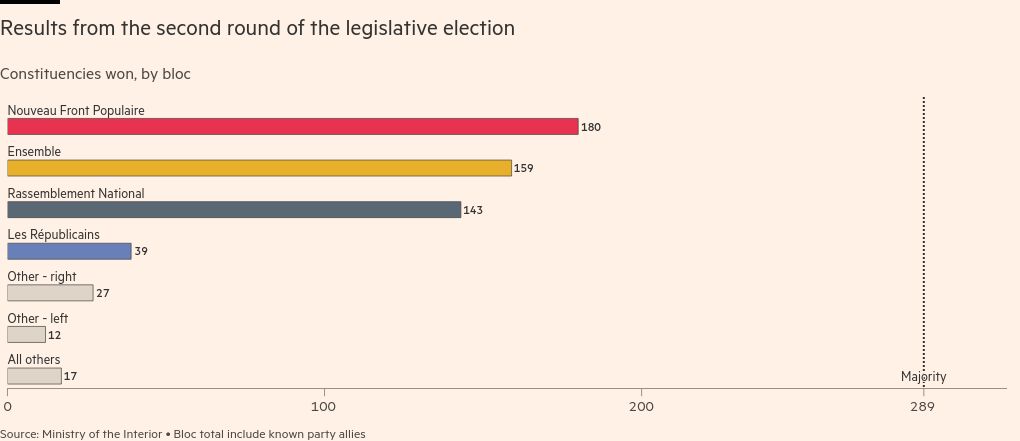
The hastily assembled NFP, spanning from the far left to the Greens and centre-left, said it intended to form a government and implement its high-tax, high-spending programme.
But the bloc fell short of an outright majority, and with deep disagreements between the left and potential centrist allies, the NFP’s path to power remains uncertain.
Raphaël Glucksmann, a leading centre-left politician, said: “We’re ahead, but we’re in a divided parliament . . . so we’re going to have to act like grown-ups.” But few others in his alliance are ready to compromise.
Here are five key points from the final round of the parliamentary vote:
The ‘front républicain’ held strong against the far right
Sunday’s result shows the front républicain is alive and well.
The French political tradition of leftist and centrist parties banding together to block the far right — a strategy that involved tactically withdrawing candidates from three-way races — delivered beyond expectations.
The NFP and Macron’s Ensemble pulled out more than 200 candidates ahead of the second round, asking supporters to cast their votes against the far right. That relegated the RN, which came first in the initial round of voting in June, to third place.
Despite fears that many French voters would not vote if forced to choose between the far right and far left, turnout reached a record high of almost 67 per cent. Many voted tactically to stop Le Pen’s party.
As a result, the NFP has become the new parliament’s largest group with 180 seats. Ensemble lost more than 100 seats from the last parliament but will be the second-largest bloc, winning more run-offs against the far right than the leftists did.
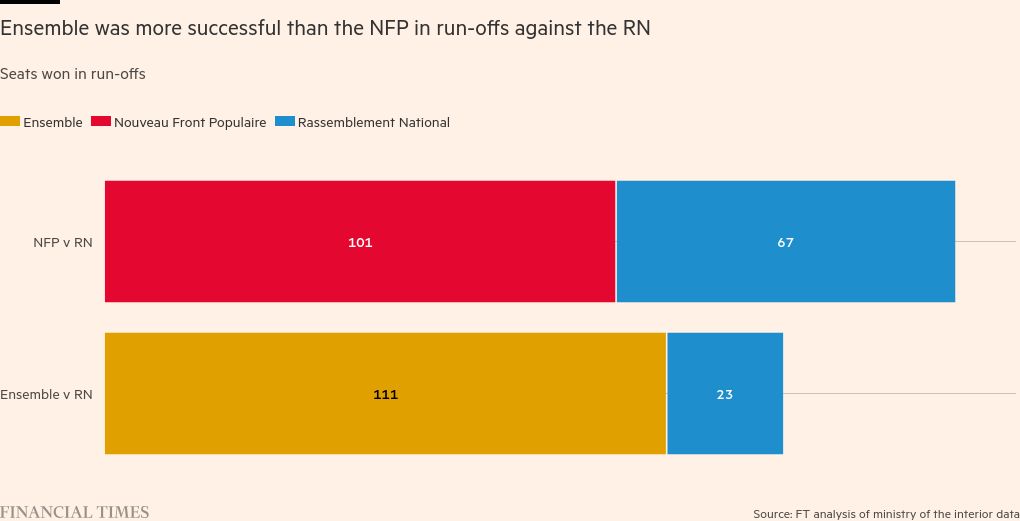
The centre-left gained ground within the NFP
Anti-capitalist firebrand Jean-Luc Mélenchon, who leads far-left La France Insoumise, was quick to declare victory on Sunday and demand to form a government.
But behind the NFP’s strong performance lies a shifting balance of power. While Mélenchon’s LFI remains the largest party in the group, the vote strengthened the hand of more moderate leftists.
That will make it more difficult for Mélenchon and his backers to impose a candidate for prime minister, since the leaders of the broad leftwing bloc — who come from across the alliance — will now negotiate among themselves to agree a candidate.
Of the left wing’s seats, Mélenchon’s LFI won 74, while the Parti Socialiste secured 59 and the Greens 28, according to Le Monde. The Communist party won nine seats, while other smaller allies shared the rest.
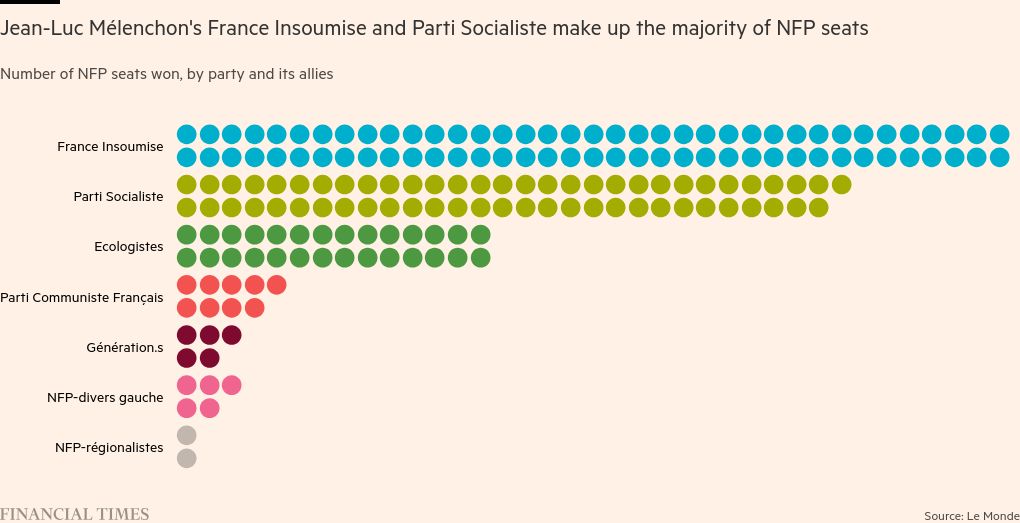
Leftwing voters shifted most between rounds
Leftwing voters were much more likely to vote in the second round for candidates they had not backed in the first.
In run-offs between candidates from Macron’s Ensemble alliance and the far right, 72 per cent of voters who had initially picked a leftwing party opted for the centrists in the second round, according to pollster Ipsos. Only 3 per cent switched to Le Pen’s party.
But where voters had to decide between the two extremes in the run-off — facing a choice between the hard-left LFI and far-right RN — 43 per cent of those who voted for Macron’s Ensemble in the first round switched to the hard left, while 19 per cent chose the far right.
Parti Socialiste leader Olivier Faure said on Sunday: “Three weeks ago, the far right was at nearly 40 per cent [of the vote]. Today, it has been defeated. Our country knew how to react.”
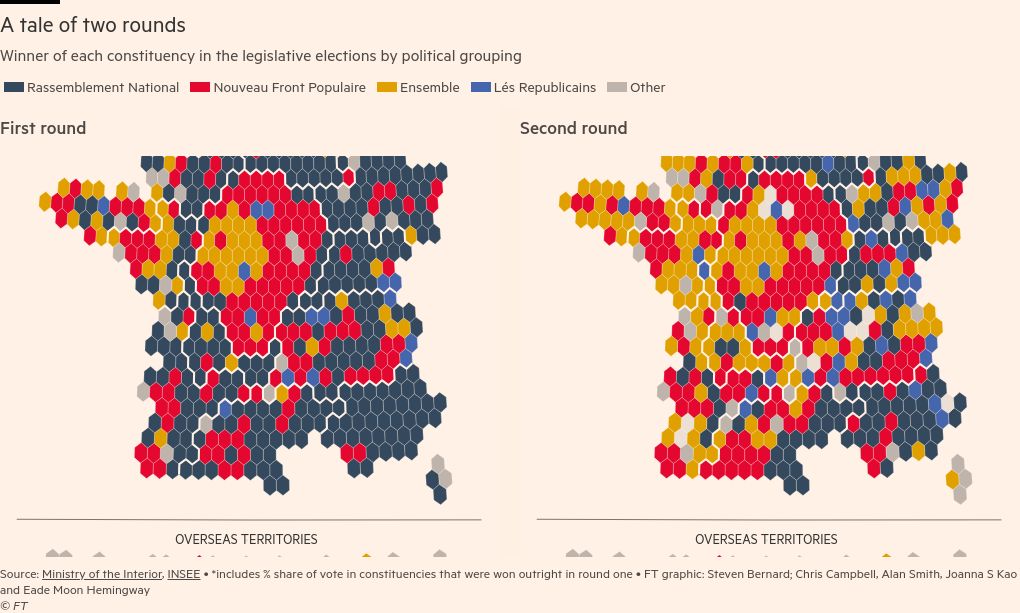
Macron’s alliance exceeded (quite low) expectations
Macron’s centrist Ensemble alliance lost more than a third of their seats from the 2022 election, falling to 159 seats.
But the pact with leftists against the far right — plus an active campaign led by Prime Minister Gabriel Attal — helped them to avoid the more crushing defeat that some polls had forecast.
The Macron camp was also aided by the high turnout, which enabled its candidates to qualify for the run-offs.
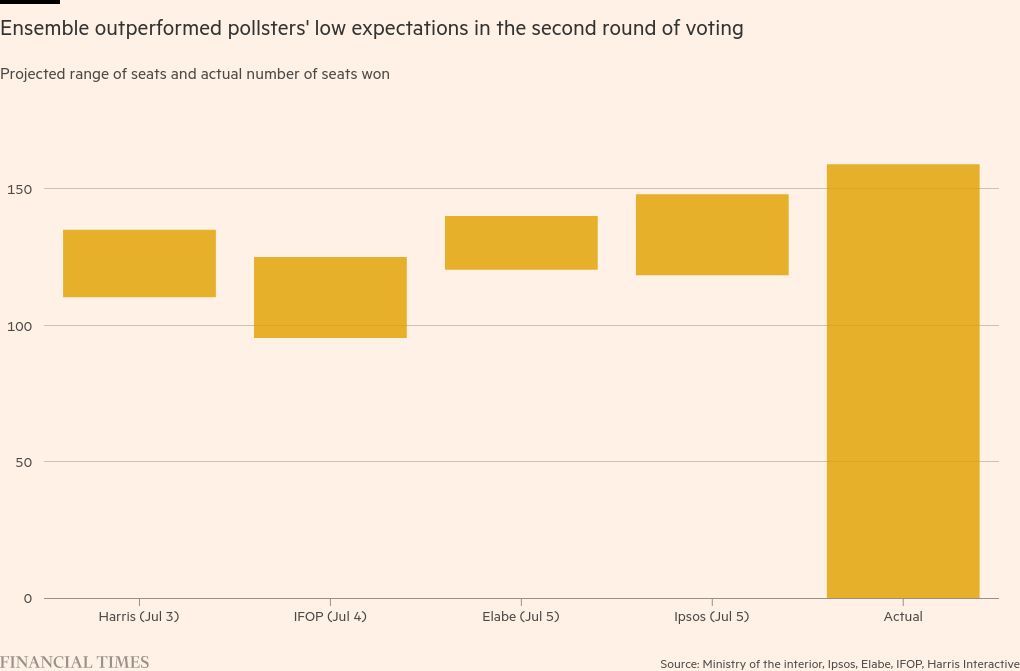
The RN’s ambitions to govern were dashed, but its rise continues
The far-right RN and its allies have gained ground steadily over the past decade, increasing their seats from just two in 2012 to 143 after Sunday’s vote.
The party’s parliamentary presence has reached a record high ahead of presidential elections in 2027, prompting Le Pen to claim: “Our victory has only been delayed.”
There was still deep disappointment at the far-right party’s headquarters after it fell far short of the outright majority it had thought was in reach only days earlier — dashing the party’s hopes of governing for the first time.
The RN remains strong in the northern Pas-de-Calais and Nord departments, where Le Pen won her seat outright in first-round voting on June 30. It also made gains in south-eastern France but overall did not convert the majority of its first-round victories into second-round wins.
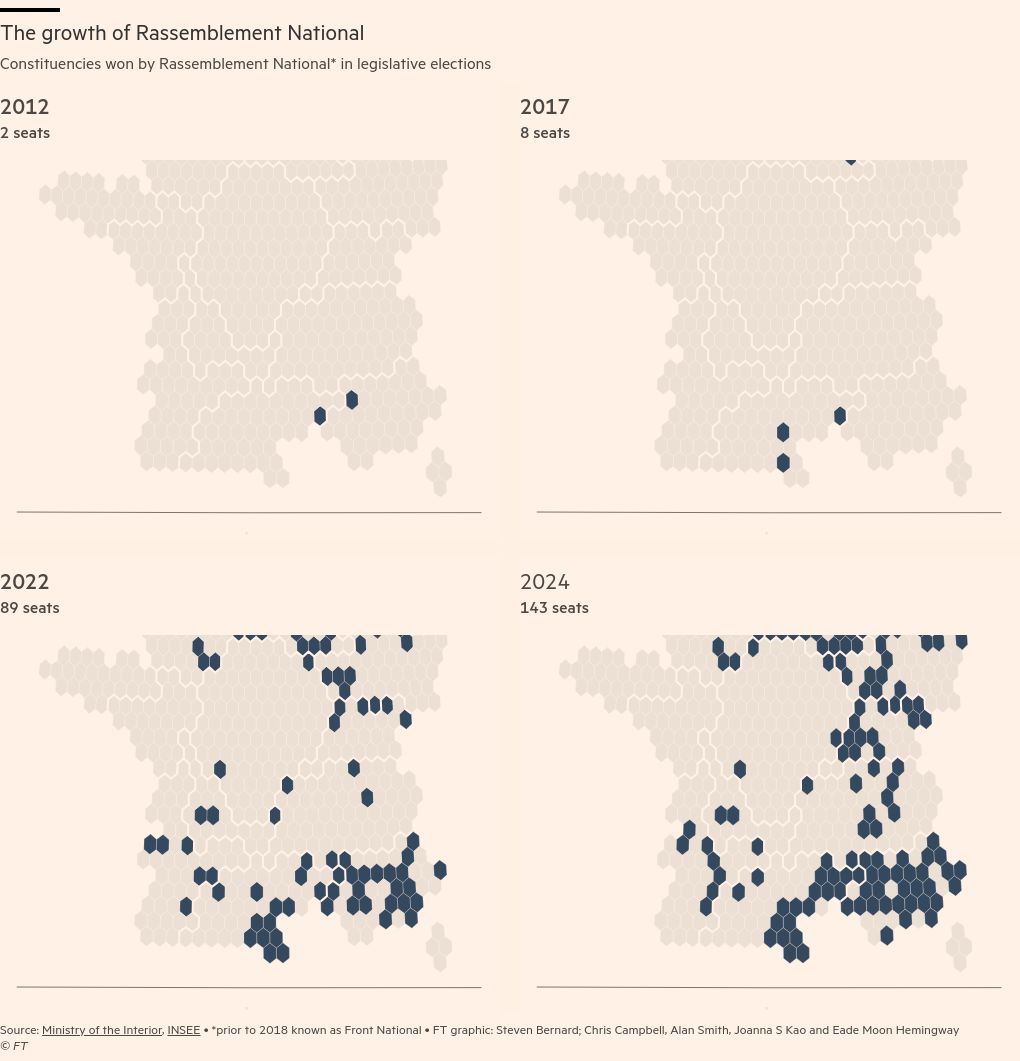
Additional data visualisation by Janina Conboye